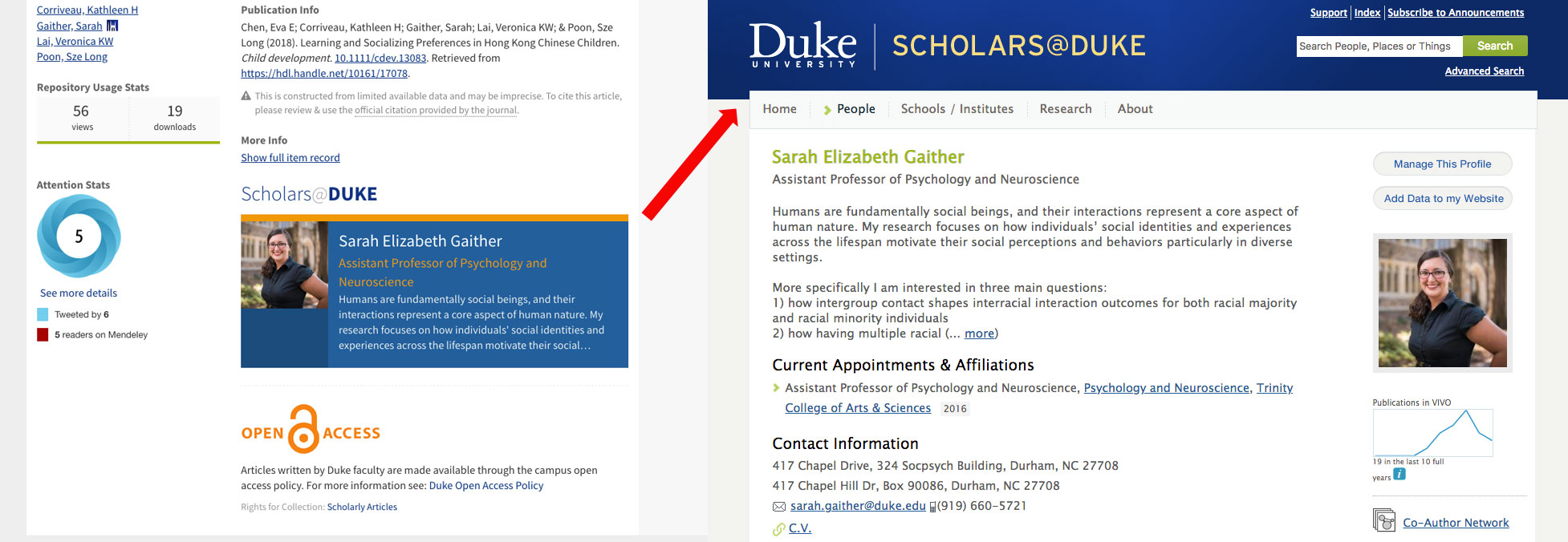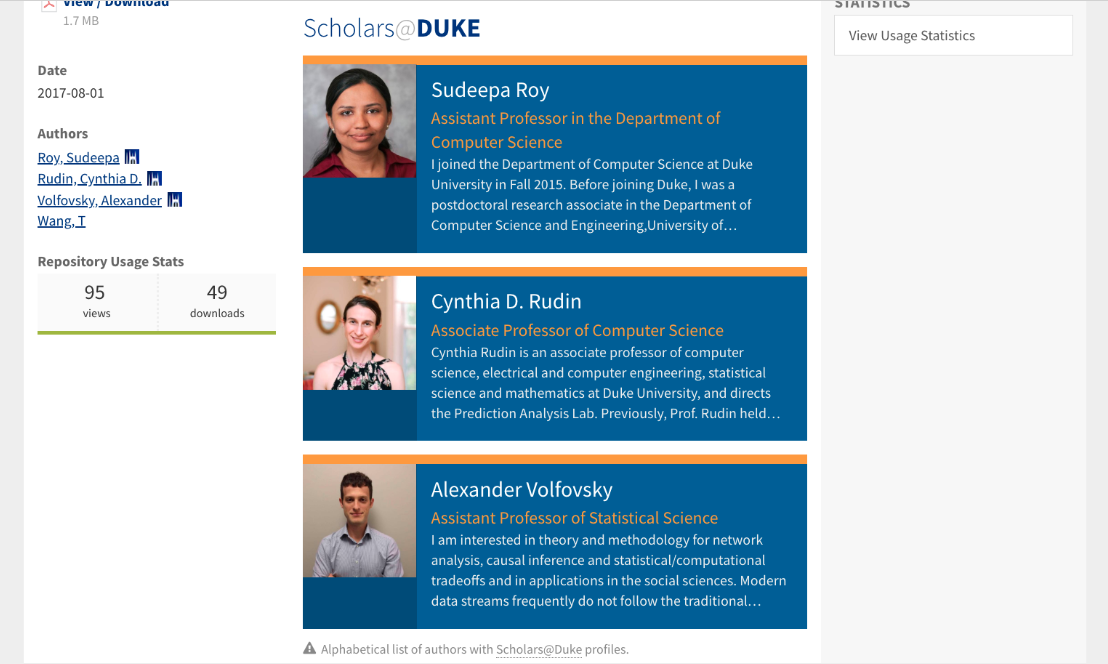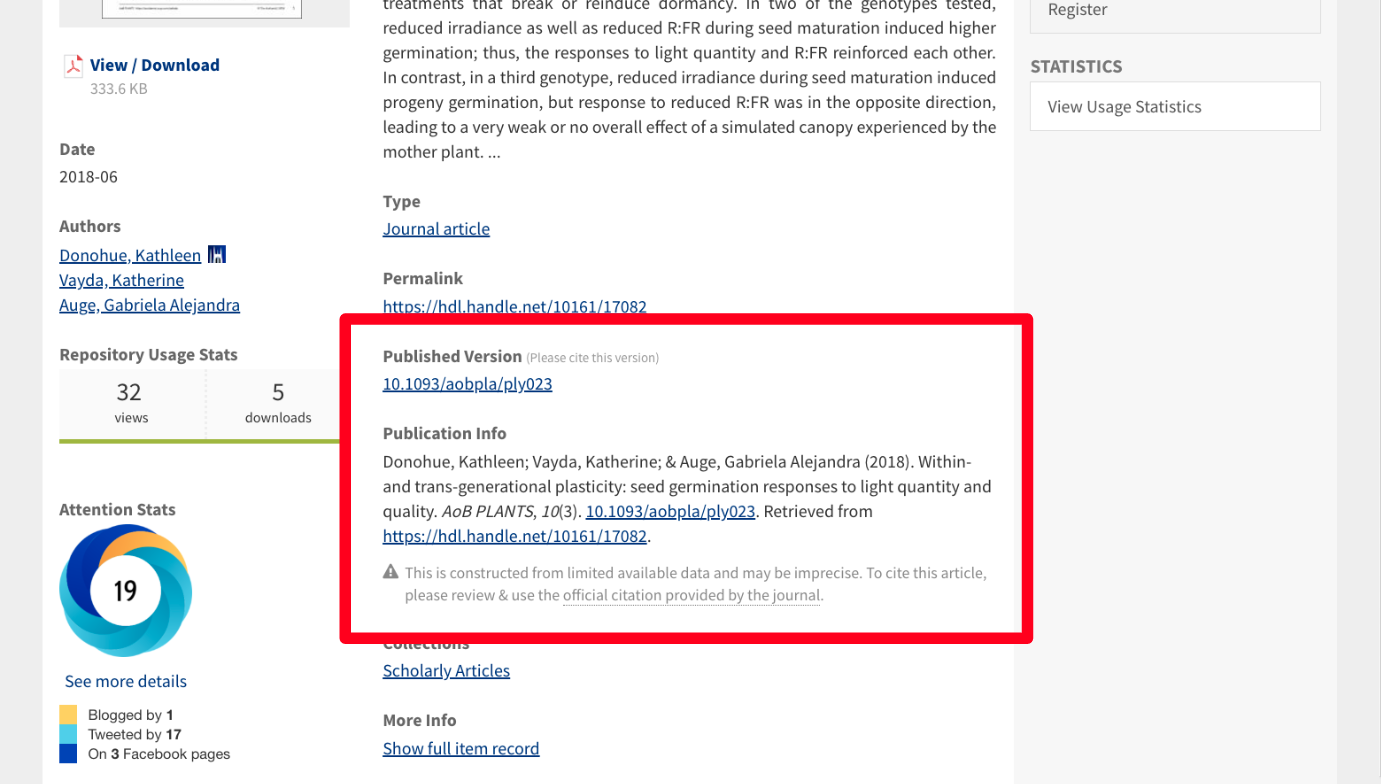2018 has featured several monumental changes in the library’s technology platforms. One of the most impactful shifts this year was revitalizing DukeSpace, our DSpace-based institutional repository (IR) software, home to over 16,000 open-access articles, theses, and dissertations from Duke scholars.
Back in March, we celebrated a successful multi-version upgrade for DSpace, and along with it, a major upgrade to the integral Symplectic Elements Research Information Management platform. On the heels of that project, we decided to capitalize on the project team’s momentum and invest two more months of focused attention (four “sprints” in developer-speak).
The goals for that period? First, tie up the loose ends from the upgrade. Then, seize some clear opportunities to build upon our freshly-rearchitected metadata, creating innovative features in the UI to benefit scholars. By scholars, we mean — in part — the global audience of researchers openly discovering and using the articles in DukeSpace. But we especially mean the scholars at Duke who created them in the first place.
We are excited to share the results of our work with the Duke community and beyond. Here are the noteworthy additions:
Scholars@Duke Author Profiles
Item pages now display a brief embedded profile for each Duke author, featuring their preferred name, a photo, position title, and brief description of their research interests. This information comes from the scholars themselves, who manage their profiles via Scholars@Duke (powered by the open-source VIVO platform).

Scholars@Duke provides a handy SEO-friendly profile page (example) for each scholar. It aggregates their full list of publications, courses taught, news articles in which they’re mentioned, and much more. It also has useful APIs for building widgets to dynamically repurpose the data for display elsewhere. Departments throughout Duke (example) use these APIs to display current faculty information on their web sites without requiring anyone to manually duplicate or update it. And now, the library does, too.

Featuring researchers in this manner adds several other benefits, including:
- Uses a scholar’s own preferred current version of their name and title; that may not be identical to what is stored in the item’s author metadata.
- Puts users one click away from the author’s full profile at Scholars@Duke, where one can discover the entirety of the author’s publications, open-access or not.
- Helps search engines make stronger semantic connections between an author’s profile information and their works available online.
- Introduces a unique value-add feature for our open-access copy of an article that’s unlikely to ever be possible to replicate for the published version on the academic journal’s website.
- Makes the DukeSpace item pages look better, warmer, and more inviting.

With this feature, we are truly pushing beyond the boundaries of what an institutional repository traditionally does. And likewise, we feel we’re raising the bar for how academic research libraries can showcase the members of their communities alongside their collected works.
Other New Features
Beyond these new author profiles, we managed to fit in a few more enhancements around citations, the homepage, and site navigation. Here’s a quick rundown:
Citations
We now present an easily copyable citation, composed from the various metadata available for each item. This includes the item’s permalink.

In cases when there’s a published version of an article available, we direct users to review and use that citation instead.

Item pages also now display a “Citation Stats” badge in the sidebar, powered by Digital Science’s Dimensions tool. Click it to explore other scholarly work that has cited the current item.
Homepage
Finally, we topped off this project phase by redesigning DukeSpace’s homepage. Notable among the changes: a clearer indication of the number of items (broken down by type), a dynamic list of trending items, and streamlined menu navigation in the sidebar.
Final Thoughts
Duke Libraries’ current strategic plan emphasizes the mission-critical importance of our open-access publishing and repository efforts, and also demands that we “highlight and promote the scholarly activities of our faculty, students, and staff.” This two-month DukeSpace enhancements project was a great opportunity for us to think outside the box about our technology platforms, and consider how those goals relate.
Many thanks to several people whose work enabled these features to come to life, especially Maggie Dickson, Hugh Cayless, Paolo Mangiafico, and the Scholars@Duke team.




